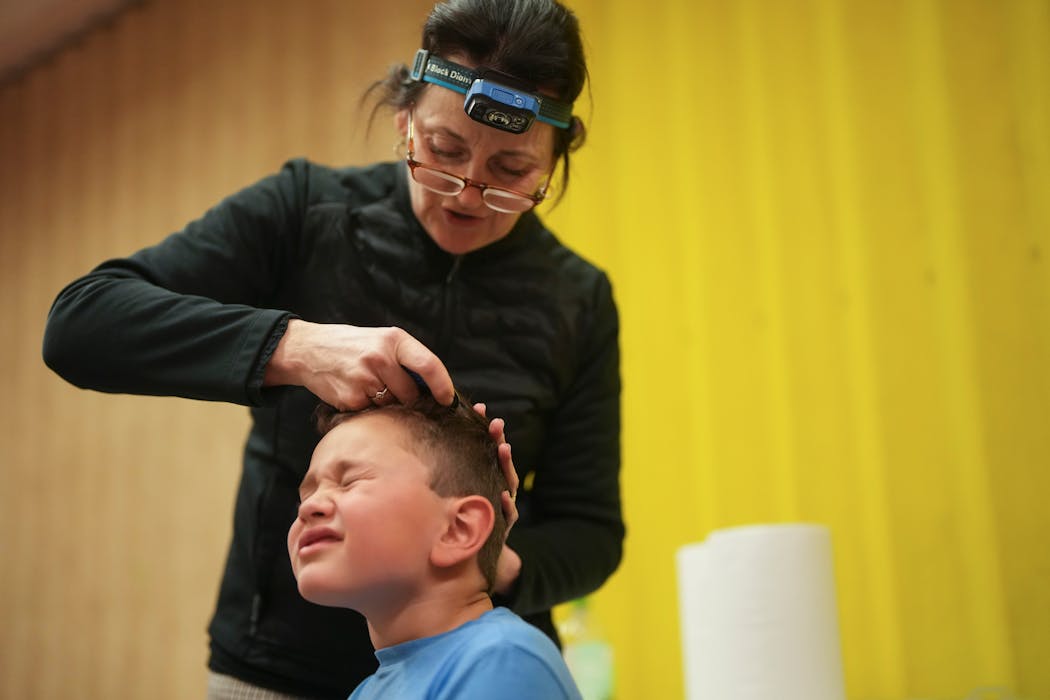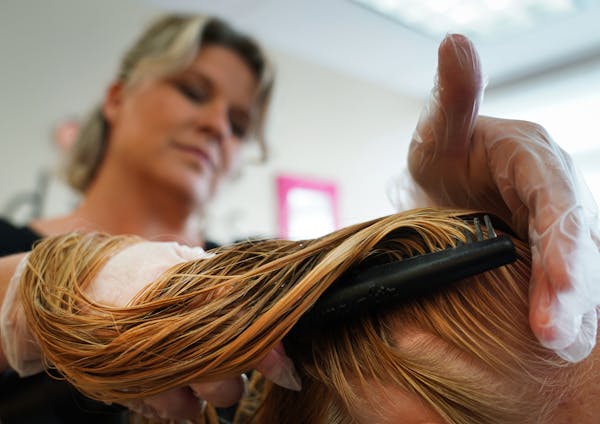Never underestimate a mom whose household has been cursed with head lice. Especially if they've hit her house twice.
Erin Bailey remembers the horror of pulling her 2-year-old out of the bathtub and spotting the familiar bug crawling on her daughter's scalp last November. This was less than two months after lice set up camp on the heads of her family, triggering a frenzy of manic cleaning, costly treatments and emotional toll.
When she learned other families at her 6-year-old daughter's St. Paul elementary school were continuing to get lice — in many cases, multiple rounds — she started to get more passionate. Why wasn't the school notifying families?
"Parents need to know," Bailey said. "It feels like we're shaming people by not talking about lice. I feel like we should acknowledge that it's hard and not treat moms like they're crazy."
I wrote last fall about my family's own experiences with lice and praised schools for shielding kids from the kind of stigma that wounded the psyches of generations of schoolchildren before them. Many schools no longer exclude children if they have lice eggs (known as nits) or even adult lice in their hair. That's great. A lice outbreak does not amount to a public health crisis, and affected children should not miss school because of it.
But it's still a major pain in the rear for parents, and schools ought not to ignore it. Once a cluster of cases develops, a simple email home with facts and resources would prompt caregivers to check their kids' heads. Those precautions could help curb lice from circulating throughout the school.
Policies and protocols on lice often vary not just from district to district, but school to school. Gonne Asser, who runs a Twin Cities lice-removal business, Minnesota Lice Lady, says in some schools, "the pendulum has swung way too far."
"Emotionally, psychologically, it's absolutely affecting parents, and that's what's missing from the conversation in a deep way," Asser said. "Parents have a right to know if there's something that can affect their child and will bring the family to a standstill."
Asser said this school year has been one of the worst for head lice she's seen in the roughly 13 years she's been in business. She attributes some of the proliferation to a warm December, a time when kids usually can tamp down the spread from head-to-head contact because they're wearing hats on the playground.
The National Association of School Nurses advises against broad notifications to parents when cases arise in the classroom, saying those alerts can breach student confidentiality. Those alerts can also unnecessarily panic parents who don't grasp how lice are spread. (Fact: These bugs cannot jump or fly, so they're not hopping from one student to another while kids are docilely sitting at their desks.) The nurses group cites research showing that a child found to have live lice has likely had an infestation for at least a month, and says that kid "poses little risk of transmission to others" at school.
But this guidance overlooks the fact that small children often have little to no personal boundaries. They're wrestling at recess, hugging each other at lunchtime and touching heads on the bus. This is how kids socialize. While lice is more likely to spread within friend groups in the community — often through sleepovers, selfies, and sports and other extracurricular activities — of course it's also happening at school, because that's where kids congregate with their friends.
At Adams Spanish Immersion in St. Paul, where Bailey's daughter attends, parents asked school officials for more communication about the cases. There was no official policy barring such alerts — but recently it hasn't been common practice, said Yeu Vang, assistant superintendent of St. Paul Public Schools.
Vang told me the district needs to balance the need for communication with student privacy. She also said those notes home can create a false sense of security among parents when they aren't getting the emails.
Truth is, lice are probably in your school right now. St. Paul schools advise parents at the beginning of the school year to regularly check their children and to report cases to the school nurse. "Everyone needs to be cautious," Vang said.
But this winter, what happened at Adams offers a positive lesson about how families and schools can work together to find solutions. Officials listened to parents who said they wanted more information, not less. In December, school officials sent families a number of updates and detailed lice protocols. It's been a welcome change for parents like Bailey, who say the updates prompt at-home vigilance and can help caregivers navigate treatment.
"There's not a single parent I've talked to who doesn't want to know," Bailey said.
The most heartwarming aspect of the story is what Bailey and other parents did next. In December, at a church near the school, they hosted a "lice party" where dozens of kids played Twister, made crafts, watched movies and had their heads checked and combed for lice by Asser and her staff.
On top of that, the parent-teacher organization helped pay for Asser's services, lice combs for families and take-home treatment to be kept in the school nurse's office. This is a win for the community. Professional lice removal can be costly — I spent about $700 on my family's one bout with lice — but experts say a lice comb and patience can go a long way.
If there was a stigma associated with lice, tell that to the young party guests who were openly discussing their infestations, laughing and running about. Parents bonded over their shared lice experiences. Bailey's daughter had so much fun she asked her mom if they could throw a lice party every Friday.
"It was proof to me that people can band together, but they do need the information," Bailey said. "We can support each other and make it a community event and a rite of passage."

Yuen: This Minnesota-based preacher left the church and found God in the woods
Yuen: The bizarre and relatable case of Minnesota state Sen. Nicole Mitchell

Yuen: Lynx No. 1 pick Pili finds 'blessing' fueling dreams of Samoan, Indigenous kids

Yuen: Why do people forgive? It's messy, complex and 'the best form of self-interest'






